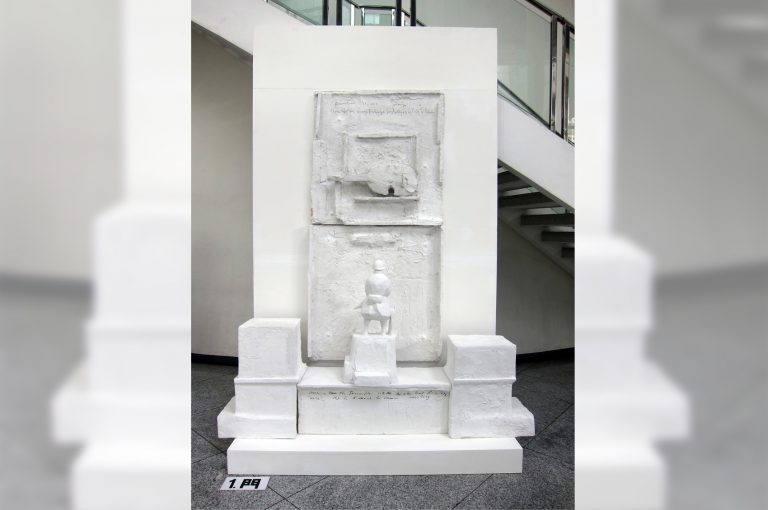Whether through painting, mixed media, sculpture, or art installation, artmaking is Robles’ way of expressing his own sentiments and personal relationship with the fight for democracy. In Here is How the Transition into the Mambo Beat Looks Like 2016, the artist alludes to events and symbols of Martial Law and the EDSA People Power Revolution of 1986. One part of the installation, called The Running Fence, was sparked by Robles’s memory of the Marcos years, when fence after fence was erected on the Manila streets he knew as a boy.
The title “Here is How the Transition into the Mambo Beat Looks Like 2016” refers to an exhibit of the same title mounted three decades ago, in 1986. In a Dadaist act, Robles randomly chose the title phrase from a book. According to Robles, the current exhibit is “still moves to the beat of mambo music towards emancipation.” The repetition of various elements in the installation, like the structure of mambo music, follows our “ups and downs towards nationalism.”
Robles’ intention is “to express the struggle of each Filipino to uphold, to remove the fence of ignorance, to set the spirit free.” His hope is for museum visitors to think about the installation’s symbolism of fences and barriers that block freedom of mind and ideology; and of chairs and tables that offer dialogue in our fight for true democracy.
Here is How the Transition into the Mambo Beat Looks Like 2016 is a conceptual art installation by Robert M.A. Robles presented by Galleria Duemila and Yuchengco Museum in celebration of the 30th anniversary of the EDSA/People Power Revolution.
